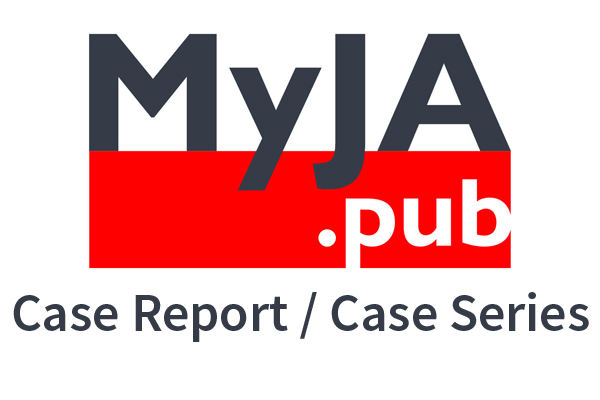Keywords
Abstract
Electrical cardioversion can precipitate prolonged bradycardia and cardiac arrest when the sinoatrial node is dysfunctional, and the escape rhythms from the atrioventricular node and ventricles fail to take over. We report the case of an elderly male who rapidly progressed into bradycardic peri-arrest after electrical cardioversion for persistent atrial fibrillation. Despite the immediate initiation of intravenous atropine and transcutaneous pacing, 2 minutes of cardiopulmonary resuscitation with further boluses of atropine and adrenaline were required before the return of spontaneous circulation. The patient was transferred to the intensive care unit, and a permanent pacemaker was implanted before discharge. Advanced age, long duration of atrial fibrillation, previous aortic valve replacement, use of anti-arrhythmic drugs, and intravenous propofol bolus were all contributing factors to this event. We summarise the relevant clinical features, risk factors, and management considerations, in the hope of promoting awareness of this rare complication of a common procedure.
References
Pisters R, Nieuwlaat R, Prins MH, et al. Clinical correlates of immediate success and outcome at 1-year follow-up of real-world cardioversion of atrial fibrillation: the Euro Heart Survey. Europace. 2012;14(5):666-674. https://doi.org/10.1093/europace/eur406
Grönberg T, Nuotio I, Nikkinen M, et al. Arrhythmic complications after electrical cardioversion of acute atrial fibrillation: the FinCV study. Europace. 2013;15(10):1432-1435.
Shin DG, Cho I, Hartaigh B, et al. Cardiovascular Events of Electrical Cardioversion Under Optimal Anticoagulation in Atrial Fibrillation: The Multicenter Analysis. Yonsei Med J. 2015;56(6):1552-1558. https://doi.org/10.3349/ymj.2015.56.6.1552
Farkas J. Internet Book of Critical Care. EMCrit. [updated 2021 Nov 20. Available from: https://emcrit.org/ibcc/bradycardia/#other_medications
Toso E, Blandino A, Sardi D, et al. Electrical cardioversion of persistent atrial fibrillation: acute and long-term results stratified according to arrhythmia duration. Pacing Clin Electrophysiol. 2012;35(9):1126-1134. https://doi.org/10.1111/j.1540-8159.2012.03453.x
Park J, Seol SH, Kim DK, et al. Safety concern with electrical cardioversion of persistent atrial fibrillation with slow ventricular response. Pacing Clin Electrophysiol. 2022;45(8):963-967. https://doi.org/10.1111/pace.14483
Jones SA, Boyett MR, Lancaster MK. Declining Into Failure. Circulation. 2007;115(10):1183-1190. https://doi.org/doi:10.1161/CIRCULATIONAHA.106.663070
Rasmussen PV, Blanche P, Dalgaard F, et al. Electrical cardioversion of atrial fibrillation and the risk of brady-arrhythmic events. American Heart Journal. 2022;244:42-49. https://doi.org/https://doi.org/10.1016/j.ahj.2021.10.182
Doukky R, Bargout R, Kelly RF, Calvin JE. Using transcutaneous cardiac pacing to best advantage: How to ensure successful capture and avoid complications. J Crit Illn. 2003;18(5):219-225.
Soar J, Böttiger BW, Carli P, et al. European Resuscitation Council Guidelines 2021: Adult advanced life support. Resuscitation. 2021;161:115-151. https://doi.org/10.1016/j.resuscitation.2021.02.010







